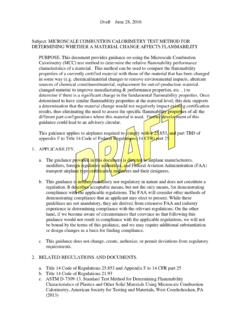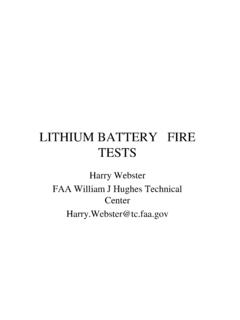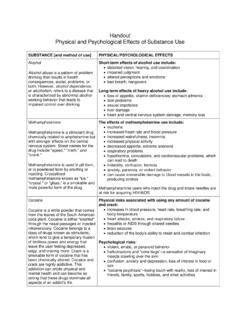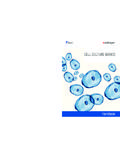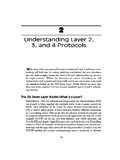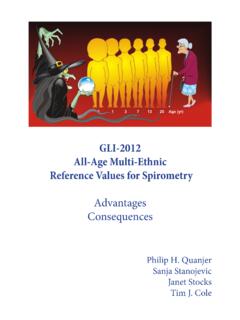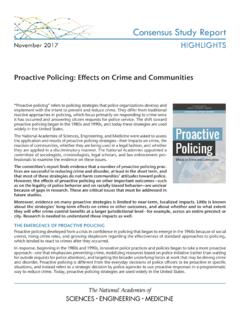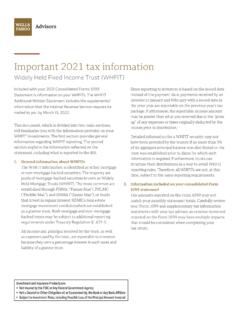Transcription of Appendix C Materials Used in Aircraft - FAA Fire Safety
1 C-1 Appendix CMaterials used in IntroductionMaterials used in Aircraft are roughly the same regardless of the type of Aircraft involved (normal and transportcategory airplanes and/or rotorcraft). The various Federal Aviation Regulations (FARs) refer mostly to FAR 25 forflammability requirements. For simplicity, this discussion will, therefore, refer only to FAR Part Aircraft SeatsAircraft seats use a wide variety of nonmetallic Materials in the constructions of the components that make up acomplete seat. These components can be grouped into five basic areas (see figure C-1): foam cushions,upholsteries, fire blockers, plastic moldings, and structure. All nonmetallic seat parts must meet FAR (b).
2 The cushions, which includes the foam, upholstery, and fire blocker (if used ), must also meet FAR (c).Figure C-1. Typical Seat CushionsSelection of foams for seats is based on requirements such as wear, comfort, flotation, flammability, and others. Tomeet these requirements, many different foams of various densities are used . The foam in the cushions is eithermolded to the final shape or cut from existing foam stock and bonded together with adhesives. Open cell urethanefoams are most commonly used with densities as low as If the cushion is to serve as a flotation device inemergency situations, the foam must be closed cell; polyethylene foams are often used for this. Neoprene, silicone,and modified urethane foams can be used for cushions to meet FAR (c) without a fire-blocking textile.
3 Theymay also be used as fire blockers over conventional foams. The densities of these foams have a range of 3 to 4 dress cover fabrics include wool, wool/nylon blends, leather, fire-retarded (FR) polyester, FR nylon, andvinyl. Wool blends with an FR treatment, typically a zirconium type, are by far the most common type of upholsteryC-2in use and have proven to be one of the most reliable in passing FAR (b) and FAR (c). Manynondecorative fabrics are also used in seat installations; FR cotton muslin is used as a slip cover to allow easierinstallation of the dress TextilesThe use of fire-blocking textiles was required by FAR 121, Amendment 184, which required that seat cushionscomply with FAR (c). To meet this regulation, textiles made of synthetic fibers, such as polybenzimidazole(PBI), aromatic polyamides, and glass, are woven or felted and used to encapsulate the foam.
4 The weight of the fire-blocking textile required depends primarily on the foam construction and type with lower density foams normallyrequiring heavier fire-blocking MoldingAircraft seats employ a wide variety of plastic moldings for items such as decorative closeouts, trim strips, foodtrays, and arm rests. Polycarbonate, acrylonitrile-butadiene-styrene (ABS), and decorative vinyls are commonlyused for these seat structures are made of aluminum; however, some manufacturers have introduced carbon compositestructures to reduce Insulati ng MaterialsThe entire pressurized section of the Aircraft is completely lined with thermal/acoustical insulation, which is by farthe largest volume of nonmetallic material in an Aircraft .
5 The acoustical requirements for the insulation are moredemanding than the thermal requirements. The insulation blanket construction used consists of a batting surroundedby a protective cover; however, in some applications, where the insulating material consists of foams or felts, aseparate cover is not used . Insulation batting and covers are required to meet FAR (b). of the thermal/acoustical insulation used is fibrous glass batting that is to lb/ft3 in density and heldtogether with a water-repellent treated phenolic binder. The diameter of the glass fiber is very small, inch for acoustical reasons. The material easily meets FAR (a) and FAR (a). In otherinsulation applications ( , used for air ducting), foams ( , urethane and polyimide) and felts ( , aromaticpolyamides) are extensively used .
6 In higher temperature areas, fibrous glass batting with a silicone binder (fortemperatures up to 700 F) and ceramic batting (for temperatures up to 2,000 F) are used . Areas of applicationinclude engine pylons, nacelles, power units, and engine bleed air CoversThe main reasons for covering insulation batting are to hold it in place and to keep out contaminants such as dust andfluids, especially water. Very thin plastic films ( to 2 mils) of polyester or polyvinyl fluoride reinforced withnylon yarn are used extensively due to their light weight and good tear resistance. In areas that are subject to abuse,lightweight, abrasion-resistant coated fabrics such as vinyl-coated nylon and vinyl-coated fiberglass are used . Areassubject to higher temperature require the use of silicone-coated fiberglass, metallized fiberglass, or ceramic InstallationInsulation is installed using a variety of attachments, including hook and loop tape (Velcro), nylon fasteners, snaps,and splicing Interior Panel StructuresAlthough a few monolithic laminate panels are used , most panels used in airplane interiors are sandwich type of construction is preferred for its high strength and stiffness to weight ratio.
7 These panels are madebasically of face sheets, adhesives, core, and decorative coverings, with small variations that depend on therequirements for the individual application. Typical panels are shown in figure C-2. These panels are used forceilings, galleys, lavatories, sidewalls, baggage racks, floors, partitions, and closets. All panels used for theseapplications must meet FAR (a) and (a-1).Figure C-2. Typical Panel SheetsAll panel faces consist of a resin system and a fiber Fiber ReinforcementThe fiber reinforcement can either be unidirectional or woven. Fiberglass, aromatic polyamides, and graphite/carbonare used due to their high strength to weight ratio and good fire resistance. Fiberglass is the most common due to itslow cost.
8 Aromatic polyamides and carbon fibers are much higher in cost but their very high strength to weight ratiomake them attractive in many Resin SystemEpoxy resin systems were widely used in the middle 1960s. Later, beginning in the 1970s, phenolic resin systemsbegan to replace epoxies because of their superior fire resistance and low smoke emissions, despite that phenolicsgenerally are lower in strength. Today, the most prevalent resin systems are phenolic. Epoxy is still used in certainapplications where strength considerations are important and/or where competing phenolic systems are not core in a sandwich panel is most often a honeycomb structure to achieve the best physical properties at theminimum weight. Aluminum honeycomb has been used in cabin interiors; however, the most common typehoneycomb is an aramid-based paper coated with a phenolic resin to stabilize the paper.
9 Aramid honeycomb rangesin density from pounds per cubic foot for lightweight ceiling panels to 9 pounds per cubic foot for floor panels;cell sizes range from 1/8 inch to 3/4 inch. Aramid honeycomb provides good fire resistance and can easily meetFAR (a) without face sheets. Other types of core Materials that have been used include polyurethane,polyvinyl chloride, polyimide foams (to reinforce edges and fastener points), and balsa wood (for floor panels inpassenger cabins and cargo holds). for Bonding Face Sheets to CoreEpoxy and modified phenolic film adhesives are used to bond face sheets to the core. Some face sheets employ amodified resin to allow bonding directly to the core and do not require a separate adhesive Coverings for PanelsAll interior panels have a decorative covering on surfaces that are visible to passengers.
10 Decorative plastics, paint,wainscoting, and tapestries all serve both aesthetic and functional purposes. See figure C-3 for a description ofdecorative coverings used in a typical main cabin of an Plastic LaminatesMost surfaces that are in direct contact with passengers and crews or surfaces that require a lightweight cover havedecorative plastic laminates. Galley and lavatory surfaces that face the aisle, ceilings, baggage racks, lavatoryinteriors, and door liners are typical applications for decorative plastic laminates. In high use areas, vinyls have beenapplied because of their good abrasion resistance. Surfaces that expect less abuse employ polyvinyl fluoride (PVF)or PVF/vinyl combinations. These Materials have good cleanability and colorfastness.


